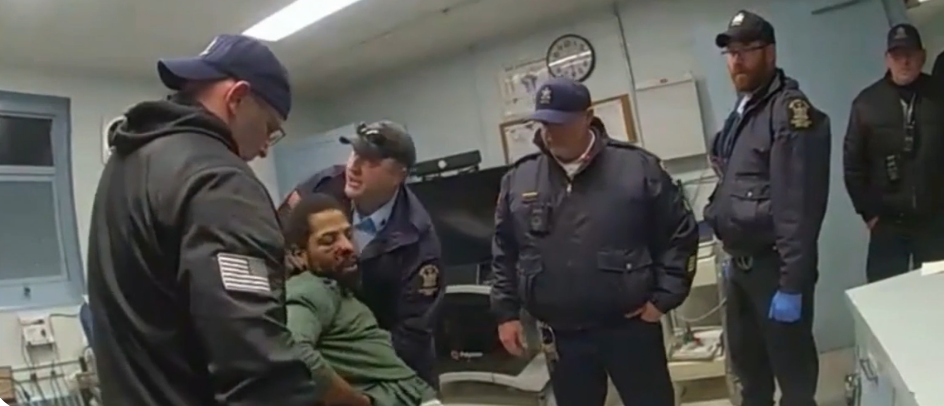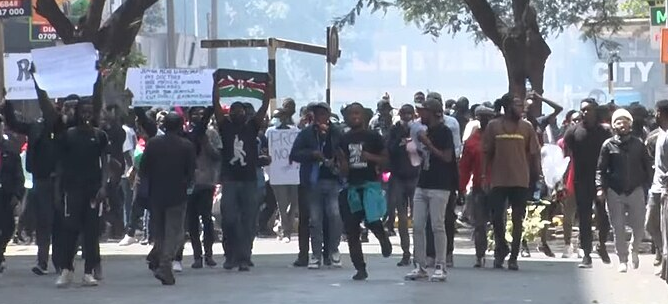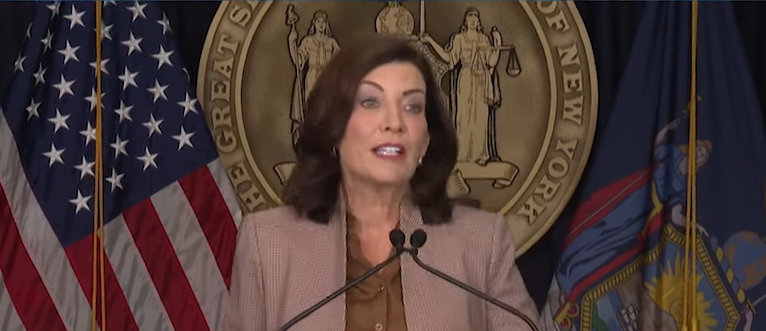Bloomberg, shown with Commissioner Kelly, was dealt a blow by Scheindlin ruling
[Pardon My Rant]
It was 12:10pm on a Tuesday. The date was December 12, 1967. The place was Washington D.C.
The Farmer’s Almanac reported the weather to be about 51 degrees. It was a foggy day with rainy and drizzling conditions.
Thurgood Marshall, the first African American justice of the United States Supreme Court, was listening to oral arguments from Louis Stokes and Reuben Payne in a case that would change the definition of the 4th Amendment for years to come. John W. Terry v. State of Ohio would become a landmark decision that would find the practice of stop-and-frisk to not to be in violation of the 4th Amendment which banned unreasonable searches and seizures.
Justice Thurgood Marshall was no stranger to cases reaching the Supreme Court. He knew full well the power of the judicial branch of government. As an attorney he won his first U.S. Supreme Court case, Chambers v. Florida at age 32. Fourteen years later, he argued and won his most recognized case, Brown v. Board of Education, which found “separate but equal” was never really equal to begin with, starting the integration of public schools.
Now, Justice Marshall sat on the opposite side of the court room for this case. He asked very probing questions attempting to identify and clarify the limitations of the 4th Amendment. His questions were attempts to understand when searches and seizures were allowed in trying to prevent a crime versus prohibited for purposes of gathering evidence for a court case (Mapp vs. Ohio). Justice Marshall also attempted to determine what constituted a “search” versus a “seizure”.
During the proceedings, Rueben Payne explained descriptively the suspicious behavior of John W. Terry and Richard Chilton as they walked back and forth in front of a jewelry story repeatedly. Soon after, a third man from across the street approached Terry and Chilton and the three men began a conversation. At that point a plain clothed police officer, Martin McFadden, approached the men and asked for them for their names. He would later stop-and-frisk them, finding a weapon on Terry, which would lead to his arrest.
Justice Marshall correctly pointed out through his questioning that McFadden did not have probable cause to make an arrest when he approached the men. He also correctly pointed out that McFadden did not have probable cause until after the stop-and-frisk. In fact, Mr. Payne acknowledged McFadden “received probable cause for arrest when he turned Terry around and ran his hands over the outside of his clothing and, feeling a gun in the upper left-breast pocket, and indicating emphatically at that time that, ‘What I felt was a gun, a weapon’”.
Justice Marshall pointed out that the police officer did not see a weapon from a distance. However, Payne would argue that McFadden had probable cause to stop and frisk due to, “the nature of the circumstances and protection of his own life”. Payne asserted that the men appeared to be casing the jewelry store for a robbery which “implied a crime of violence, which implied that they have a gun”. Additionally, Officer McFadden identified himself to the men as a police office and asked for the names of the three men. The men mumbled evading the question, which Payne argued was additional probable cause to stop-and-frisk.
In these interminable moments, Payne argued, stopping-and-frisking an individual is merely “temporary detaining or interference with a person” rather than a full blown search and a seizure. Additionally, Officer McFadden had been a police officer for 39 years, and out of those years, a detective for 35 years; he had been assigned to that part of Cleveland, Ohio, for 30 years. Based on his knowledge, judgment, and intuition, he found the three men to be acting suspiciously.
This argument drew a line in the sand for the application of the exclusionary rule.
Chief Justice Earl Warren delivered the opinion of the court, which outlined the rationale quite candidly: “In dealing with the rapidly unfolding and often dangerous situations on city streets, the police are in need of an escalating set of flexible responses, graduated in relation to the amount of information they possess. For this purpose, it is urged that distinctions should be made between a ‘stop’ and an ‘arrest’ (or a ‘seizure’ of a person), and between a ‘frisk’ and a ‘search’.”
In the end, the Decision was 8-to-1. Justice Thurgood Marshall, the once Chief Counsel of the NAACP, voted with the majority.
It was only Justice William O. Douglass that voted against the ruling. His Dissenting Opinion highlighted the issue of probable cause. He believed the only way for a seizure to be reasonable under the 4th amendment is with probable cause. Justice Douglass asserted that probable cause for stopping-and-frisking is the line that “draws a meaningful distinction between an officer’s mere inkling and the presence of facts within the officer’s personal knowledge which would convince a reasonable man that the person seized has committed, is committing, or is about to commit a particular crime”.
Let’s now fast-forward to Monday, August 12th in New York City.
It was another rainy day and U.S. District Judge Shira A. Scheindlin of the Southern District of New York deemed the New York Police Department’s (NYPD’s) stop- and-frisk practices to be unconstitutional.
In her Executive Summary, she acknowledges the 1968 Terry v Ohio ruling contending that reasonable suspicion is an “objective standard” and the test to stop- and-frisk must be for a reasonable person to suspect if an individual is armed and dangerous. She also highlights the 14th Amendment which requires equal protection of laws, prohibiting “intentional discrimination based on race”.
From 2004-2012, 4.4 million people were stopped by a cop similar to Terry. 52% of the stops led to a frisk. 98.5% of the 2.3 million frisks, found no weapon.
52% of all the stops were African Americans, 31% were Hispanic, and 10% where White.
The New York City population as of 2010 is only 23% African American, 29% Hispanic, and 33% White.
Mayor Michael Bloomberg’s ongoing defense of stop-and-frisk has been that young African American and Hispanic men are prevalent in crime complaints, which have led to a targeting of these men regardless of whether they were suspects.
Judge Scheindlin explains in her ruling that while race may be important if it fits a description, it is against the 14th Amendment to “subject all members of that racially defined group to heightened police enforcement because some members of that group are criminals”.
The conundrum we have however is the NYPD has the most diverse force in its history. According to a New York Times article from January 2011, there were more minority police officers (11,717) than White police officers (10,482) bringing the department’s demographics closer to the demographics of the city it serves and protects.
Diversity among police officers should in theory lead to reasonableness in stop-and-frisk practices. Scheindlin’s ruling is that the NYPD is in violation of the 4th and 14th Amendment.
This would mean that roughly half the time diverse police officers are racially targeting men and women that look like themselves without probable cause. If this is indeed the case, we have bigger issues in New York City than banning stop-and-frisk.
Errol Pierre is a writer, political junkie, and social commentator with a passion for Healthcare Policy. He can be reached at www.errolpierre.com






